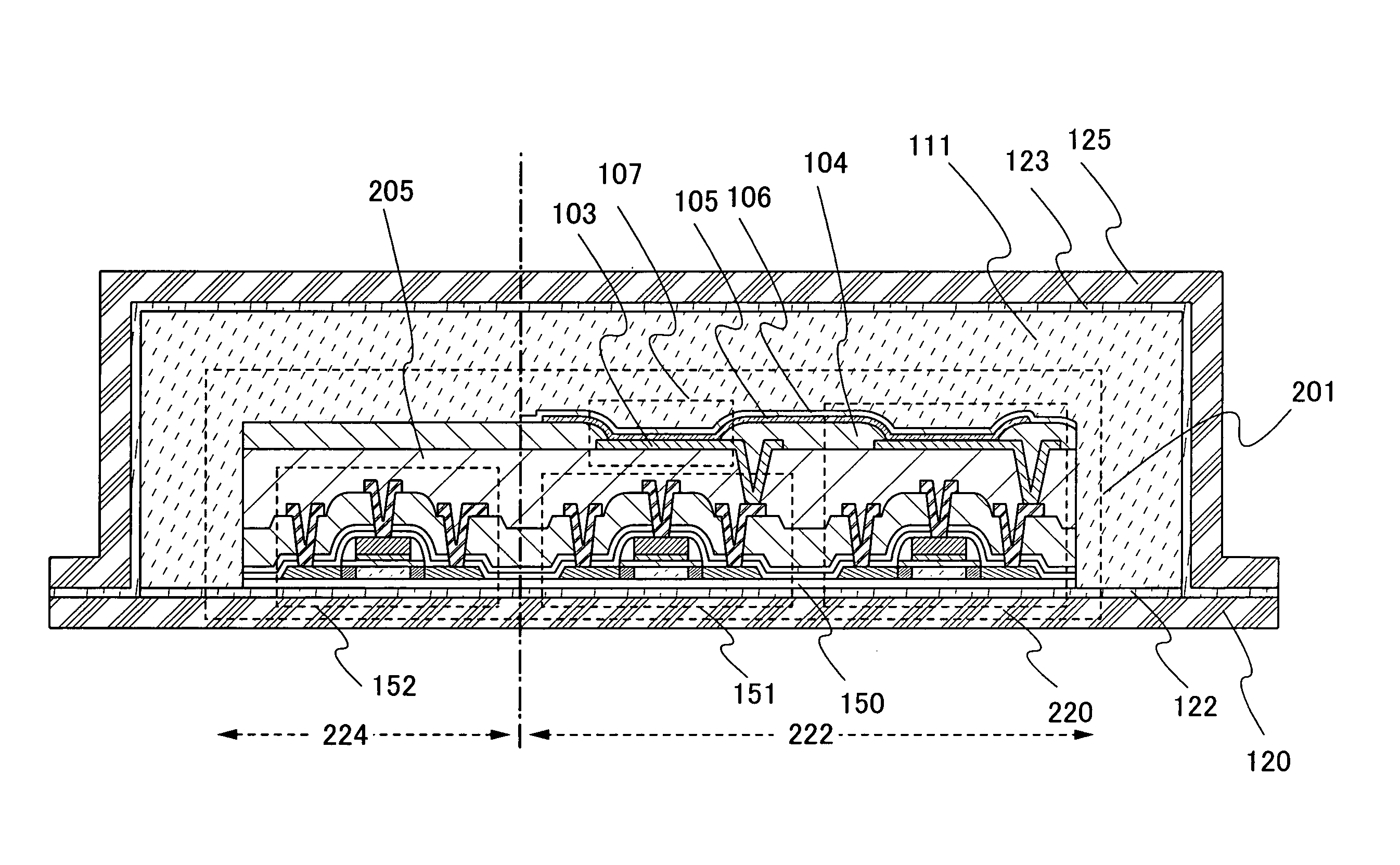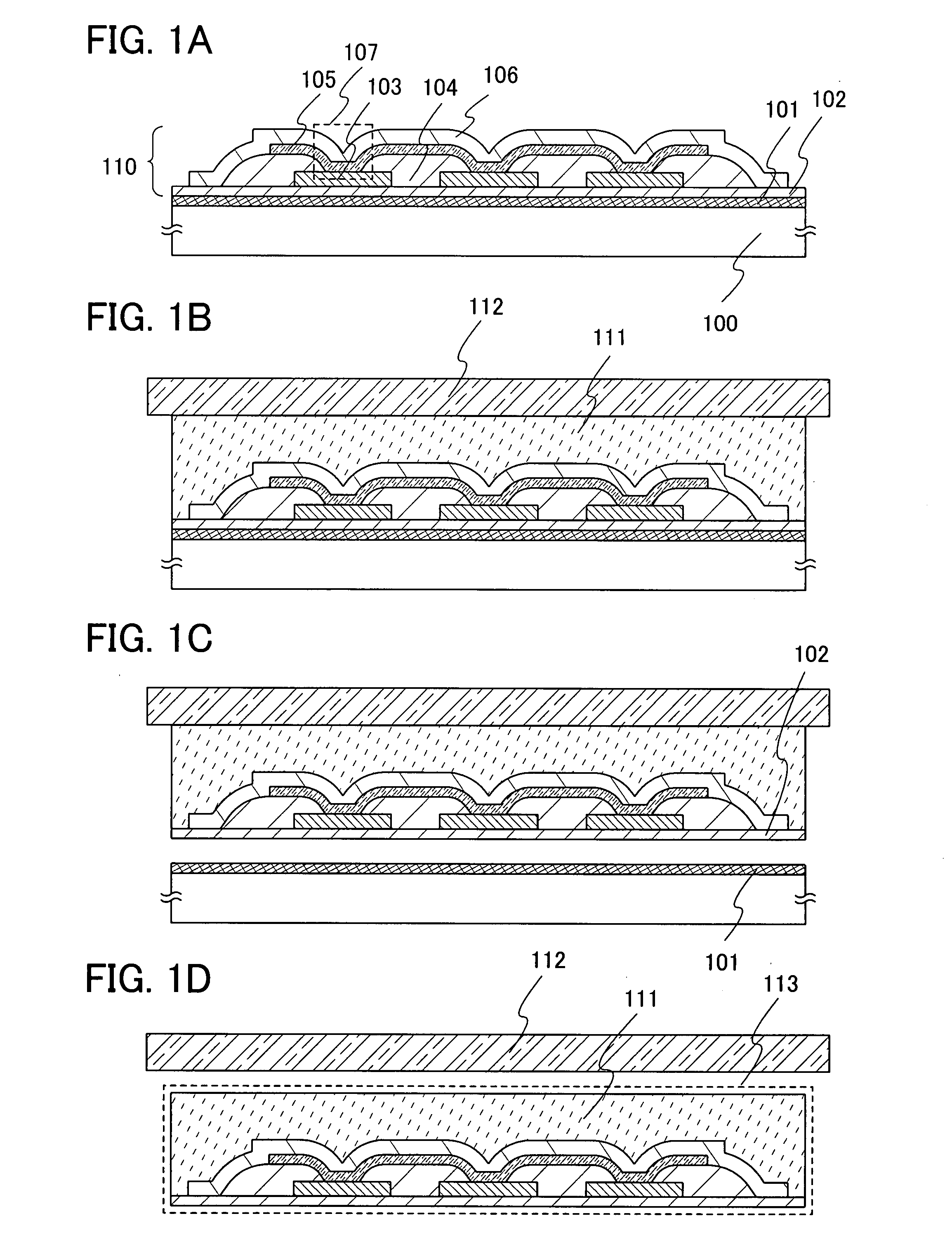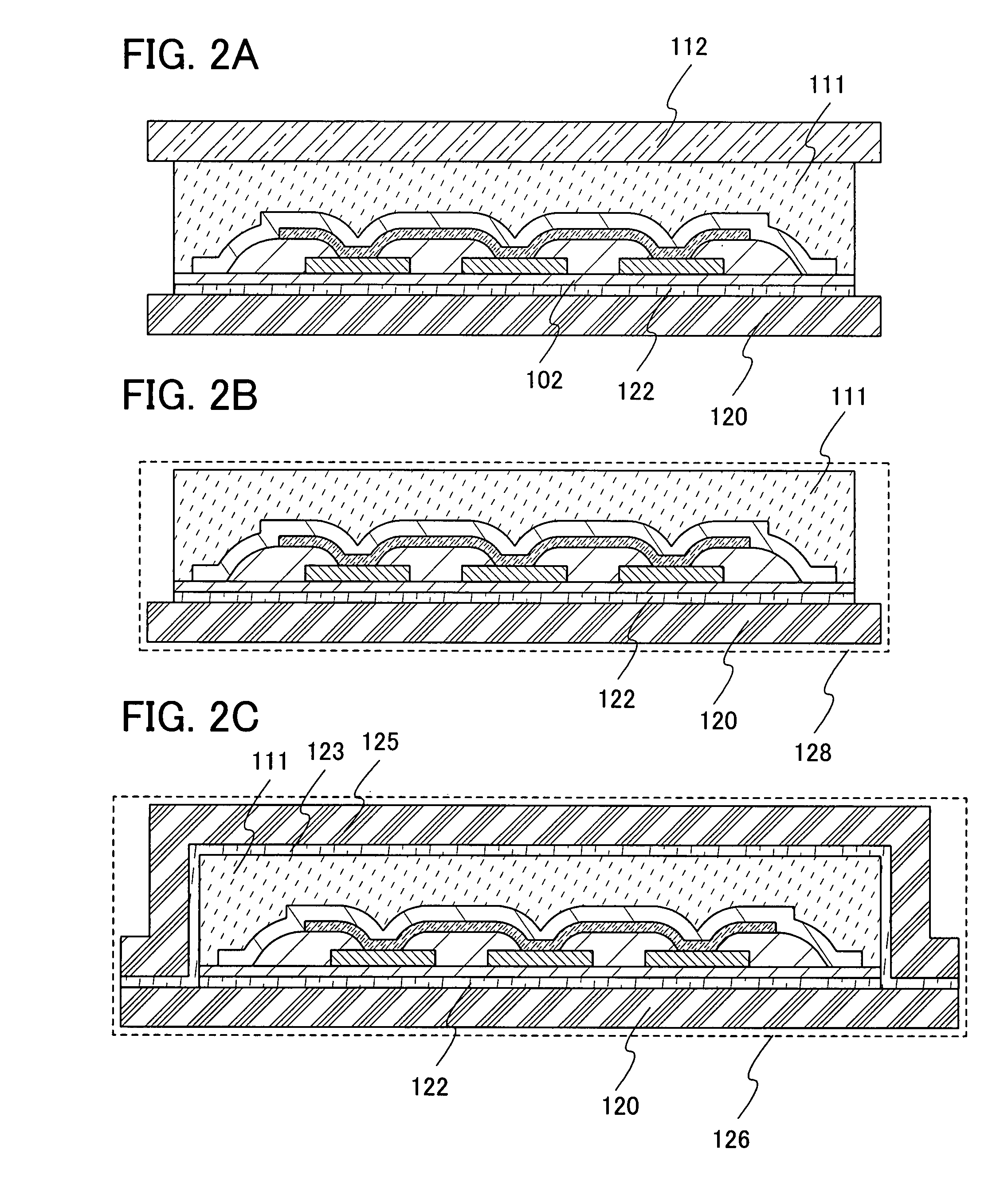Device, and method for manufacturing the same
a technology of tin crystals and manufacturing methods, applied in the field of devices and methods for manufacturing the same, can solve the problems of reducing the yield, difficult to manufacture transistors, memory elements having minute structures, and difficult to improve the performance of memory devices or semiconductor devices, and achieve the reduction of size and weight, and the effect of reducing the roughness of tin crystals, suppressing the variation in the thickness distribution of films, and reducing the roughness
- Summary
- Abstract
- Description
- Claims
- Application Information
AI Technical Summary
Benefits of technology
Problems solved by technology
Method used
Image
Examples
embodiment mode 1
[0053]In this embodiment mode, a main structure of a memory device of the present invention and a manufacturing method thereof will be described. Typically, a method for manufacturing a memory device having a memory cell array, in which memory cells each having a memory element that has a layer containing an organic compound between a pair of electrodes, a first electrode layer and a second electrode layer, are arranged in matrix, will be described with reference to FIGS. 1A to 1D, FIGS. 2A to 2C, and FIGS. 4A to 4C. Also, structures of the memory element will be described with reference to FIGS. 3A to 3F.
[0054]As shown in FIG. 4A, a memory device 127 has a memory cell array 132 and a driver circuit to drive the memory cell array. In the memory cell array 132, memory cells 21 are provided in matrix. The memory cell 21 has a memory element 107 (FIG. 1A). The memory element 107 has, over a substrate 100, a first electrode layer 103 extending in a first direction, a layer 105 containin...
embodiment mode 2
[0134]In this embodiment mode, another mode of the memory device shown in the above embodiment mode formed using a separation method will be described. Typically, a main structure of a memory device having a memory cell array where memory cells each have a switching element and a memory element will be described with reference to FIG. 5 and FIGS. 6A to 6C. FIG. 5 is a cross-sectional view of the memory device in this embodiment mode, and FIGS. 6A to 6C illustrate structures of the memory device in this embodiment mode.
[0135]As shown in FIG. 6A, a memory device 221 in this embodiment mode has a memory cell array 222 and a driver circuit which drives the memory cell array 222. The memory cell array 222 has a plurality of memory cells 220 which are provided in matrix. As shown in FIG. 6A and FIG. 5, in the memory device 221, transistors which form the driver circuit, here a transistor 152 which forms a decoder 224, a transistor 151 which functions as a switching element, and a memory e...
embodiment mode 3
[0156]In this embodiment mode, one mode of the semiconductor device shown in the above embodiment mode formed by a separation method will be described below. Typically, a main structure of a semiconductor device which can perform transmission / reception of instructions or data with radio signals will be described with reference to FIGS. 7 and 8. FIG. 7 is a cross-sectional view of the semiconductor device in this embodiment mode. FIG. 8 illustrates a structure of the semiconductor device in this embodiment mode.
[0157]FIG. 8 is a block diagram illustrating a structural example of the semiconductor device which can perform transmission / reception of instructions or data with radio signals. Such a semiconductor device includes an antenna 312, an RF circuit portion 313, a power supply circuit portion 315, and a logic circuit portion 317 as elements. The antenna 312 transmits and receives signals to / from a communication device which is also called a reader / writer. As a frequency band of ca...
PUM
| Property | Measurement | Unit |
|---|---|---|
| length | aaaaa | aaaaa |
| thickness | aaaaa | aaaaa |
| thickness | aaaaa | aaaaa |
Abstract
Description
Claims
Application Information
 Login to View More
Login to View More - R&D
- Intellectual Property
- Life Sciences
- Materials
- Tech Scout
- Unparalleled Data Quality
- Higher Quality Content
- 60% Fewer Hallucinations
Browse by: Latest US Patents, China's latest patents, Technical Efficacy Thesaurus, Application Domain, Technology Topic, Popular Technical Reports.
© 2025 PatSnap. All rights reserved.Legal|Privacy policy|Modern Slavery Act Transparency Statement|Sitemap|About US| Contact US: help@patsnap.com



